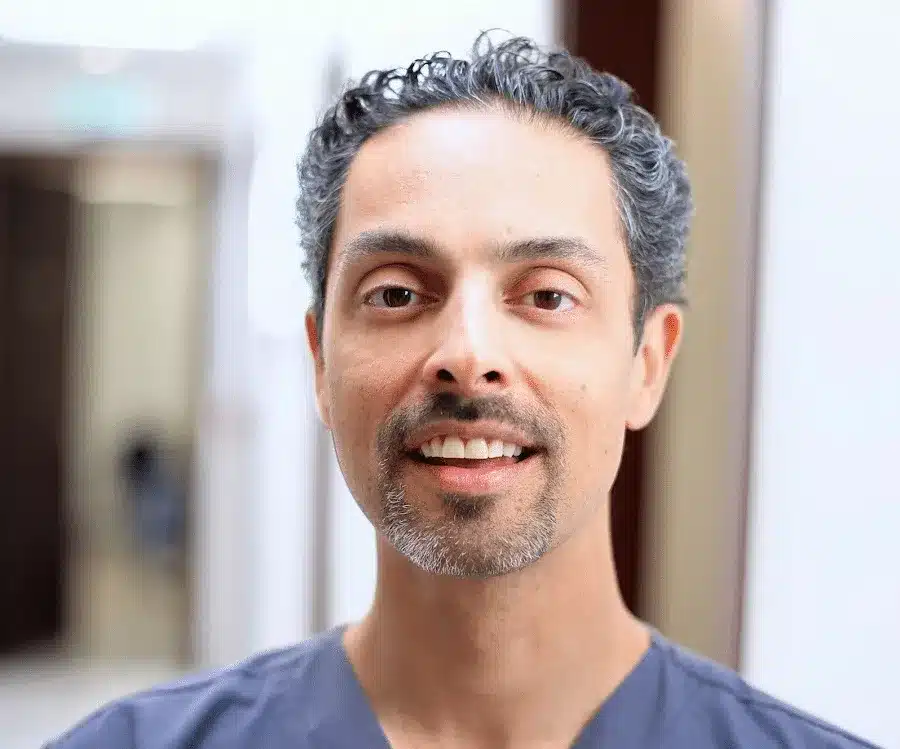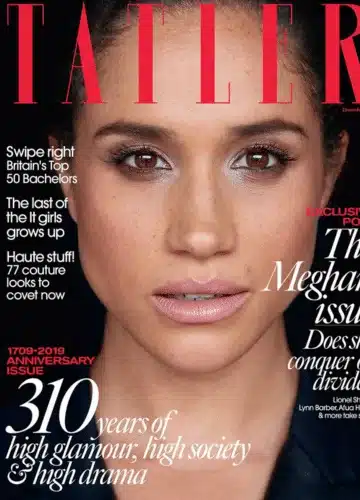Your Harley Street Deep Plane Facelift



Blepharoplasty Surgery on Harley Street, W1
What Is A Deep Plane Facelift?
The deep plane facelift is the most technically advanced form of facelift, and fewer than 5% of plastic surgeons are qualified to perform it. Dr De Silva is proud to be among them. Drawing on extensive facial anatomy and surgery expertise, he has developed a signature deep plane facelift that combines the principles of the deep plane technique, the Golden Ratio, and specialised methods to minimise discomfort. This is known as the Vertical Face Restore 7 technique, or VFR-7.
This approach lifts both the cheeks and the facial muscles, removing the need for additional fillers. The result is a sharper, youthful look that preserves natural facial contours. Dr De Silva’s signature VFR-7 deep plane facelift is ideal for patients aged 40 to 60, effectively addressing fine lines, volume loss, sagging skin, and jowls.
What Are The Different Layers Of The Face?
Understanding the layers of the face is essential for appreciating how different types of facelift surgery are designed to target specific structures for aesthetic enhancement. Here’s a breakdown of each major layer:
Skin and Superficial Fat Layer
The skin itself and a superficial layer of subcutaneous fat directly beneath it provide the face’s visible surface and are crucial for texture, hydration, and youthful fullness. Over time, skin can lose elasticity, and superficial fat can shift or diminish, contributing to sagging and wrinkles.
SMAS Layer (Superficial Musculoaponeurotic System)
Located beneath the superficial fat layer, the SMAS is a unique fibromuscular layer that covers and supports the face. This layer combines fibrous and muscular tissue, and its integrity is critical for maintaining facial structure. The SMAS layer is a primary focus in facelift surgeries, as repositioning or tightening it can significantly lift the face and restore youthful contours. Procedures that work on the SMAS are more invasive but yield substantial, long-lasting results.
Deep Facial Plane
The deepest plane, located beneath the SMAS, this layer includes deeper facial ligaments and muscles. It provides foundational support for the face and acts as an anchor for the overlying layers. This plane is crucial in advanced facelift techniques, where adjustments can offer more dramatic lifting and structural changes without overly tightening the skin or superficial tissues.

World Class Facial Cosmetic and Plastic Surgery
Deep Plane Facelift Results After 9 Days
Below are photos of Dr Julian De Silva’s patient, 9 days after my Vertical Face Restore-7 treatment. The first patient (left) had been planning to travel to the US for similar treatment.


What Does The VFR-7 Deep Plane Facelift Address
If you’re experiencing mild signs of ageing, a mini facelift or a technique focused on tightening skin may be sufficient. However, for more pronounced facial ageing—typically from the age of 40 to 60—a deep plane facelift may be ideal. This advanced approach addresses significant issues like sagging skin, loss of volume due to gravity, and jowls, provided you are in good health.
Restoring a V-Shaped Jawline (Reducing Jowls)
A deep plane facelift is highly effective for restoring the natural, youthful V-shaped jawline by lifting sagging tissue vertically rather than pulling it sideways, as in traditional SMAS facelifts. By releasing key facial ligaments, this technique repositions tissues upwards without removing natural volume, achieving a smooth, natural look without any “pulled” appearance. This approach, combined with tightening the platysma muscle in the neck, enhances the neck’s contour and complements the lift in the jawline for cohesive, balanced results. For most patients, simultaneous neck and face adjustments provide the most harmonious outcome.
Reducing Square Shaped Fullness in the Jawline & Neck
Ageing often leads to a shift from a youthful V-shaped jawline to a square contour due to the sagging of the SMAS layer. This downward pull alters facial proportions, creating fullness in the lower face and neck. Unlike fillers, which smooth jowls but don’t restore the V-shape, a deep plane facelift addresses the root of the issue by lifting the facial tissues vertically. This restores youthful contours and reduces heaviness in the lower face, achieving a rejuvenated, natural V-shaped jawline.
Addressing Deep Wrinkles
A deep plane facelift effectively smooths deep wrinkles by targeting the deeper layers of the face, beneath the SMAS layer. Unlike traditional facelifts that focus on tightening the skin, this technique lifts the underlying facial structure, reducing tension on the skin and producing a natural, long-lasting result. By repositioning the facial support structures, the deep plane facelift softens pronounced lines around the mouth and nose, creating a refreshed, youthful appearance.
Restoring Volume to Sunken Cheeks
The deep plane facelift is also ideal for restoring volume to flat or sunken cheeks. By elevating the deeper facial tissues it repositions natural fat pads, enhancing the contours of the cheekbones. This approach revives fullness in the midface, eliminating the hollow look associated with ageing. The result is a balanced, youthful appearance, as the cheeks regain natural volume without the need for fillers or implants.
Why Choose Dr. De Silva for a Deep Plane Facelift in London?
A renowned expert in facial aesthetics, Dr. De Silva combines advanced surgical skills with an eye for natural beauty. His signature procedures, including the Vertical Deep Plane Facelift and Vertical Blepharoplasty, are designed to achieve subtle, long-lasting rejuvenation. Dr. De Silva’s commitment to patient safety and comfort has led him to adopt Twilight Sedation, a technique that reduces recovery time and enhances patient experience. He is also a passionate researcher of the golden ratio in facial aesthetics and a frequent instructor, sharing his expertise in facelift surgery with surgeons globally. With over 30% of his surgeries dedicated to revisions, Dr. De Silva is widely trusted for both primary and corrective facial procedures.
Only the Face
By focusing entirely on only facelift & facial cosmetic surgery procedures, Dr De Silva is able to provide the expertise that can only come with specialisation: facelift and neck lift, blepharoplasty, rhinoplasty and chin implants.
Natural Looking Results
Dr De Silva is a believer in the importance of artistry behind cosmetic results and focuses his skills at delivering natural looking results.
Fast Recovery
Dr De Silva has pioneered the advances in technology to speed up recovery with a combination regenerative medicine techniques, Oxygen and LED Therapy.
World Class Expertise
Dr De Silva also teaches other surgeons internationally and has contributed to the development of advanced surgical techniques, laser technology and stitch-less tissue adhesives.
The Key Steps of the VFR-7 Deep Plane Facelift in London
De Silva’s Vertical Face Restore 7 deep plane facelift is a “turnkey” solution to facial ageing, customised to each individual, these are the 7 Key Steps:
1. Deep Plane Facelift
Loss of V-shaped jaw line, square jowls and skin laxity can all be treated with a vertical deep-plane facelift which restores your features without the sideways pull of traditional SMAS facelift or removal of natural volume.
2. Buccal Fat Reshaping and Chin Implant
Square-shaped fullness to jaw line and neck, sometimes accompanied by a small chin and lower cheek fullness, can benefit from buccal fat reshaping & chin implant.
3. Preservation Blepharoplasty & Temporal Brow Lifting
The appearance of tired eyes can be improved with preservation blepharoplasty and a temporal brow lift to restore youthful eye appearance.
4. Fat Transfer
Deep lines in the mid-face and a lengthened upper lip area can be addressed with a combination of fat transfer and surgical lifts. Fat transfer restores lost volume, while a deep plane facelift provides comprehensive vertical lifting. For the elongated upper lip, a lip lift can be performed to shorten and rejuvenate the area for a more youthful appearance.
5. Laser Skin Resurfacing
Skin ageing, including fine lines and enlarged pores, can be treated with the gold-standard Lumenis laser. This laser resurfaces and refines the skin, effectively reducing fine lines and minimising pore size for a smoother, more polished appearance.
6. Enhance recovery & Sedation (‘Twilight’) Anaesthesia
Avoid risks and side effects of general anaesthesia with our customised Sedation Anaesthesia that has been developed over ten years. This is often combined with th use of regenerative medicine (PRP) and oxygen therapy to enhance recovery.
7. Maintenance After Deep Plane Facelift
Facial ageing is an ongoing phenomenon, after comprehensive rejuvenation, yearly maintenance will ensure longer-lasting results. This involves a triple approach addressing volume replacement with fillers, skin rejuvenation (laser, PRP) and skin tightening (Radiofrequency).
Blepharoplasty Testimonials
Read Our Deep Plane Facelift Harley Street Patient Testimonials
By addressing the entire face as one, Dr. Julian De Silva creates natural results that restore a youthful appearance. Read our patient testimonials.
“Having Lower Blepharoplasty with Dr. De Silva gives you the benefit of years of experience, qualifications not only in the U.K. but also the U.S. and yet you don’t lose the gentle bedside manner from this doctor. From our first meeting, Dr. De Silva won me over because he gave me the time to obtain answers and explanations to all my questions in kind details, as many times as I needed.”
Sandra
In the Press
Dr De Silva’s Signature Deep Plane Facelift in London
Dr De Silva’s VFR-7 deep plane facelift offers a comprehensive approach to facial rejuvenation, restoring youthful contours over a carefully managed timeline. From the initial consultation, where your goals and unique facial structure are assessed, to the surgery itself—focused on deep tissue repositioning for a natural lift—each stage is designed for seamless recovery and optimal results.
(Procedure) consultation
The surgical process begins with a one-to-one consultation with Dr De Silva. During this honest and open discussion, you will be asked about your medical history, aesthetic goals and current facial concerns. Photos may be taken and Dr De Silva will create a personalised treatment plan adapted to your needs.
Pre-surgery preparation
To prepare for a deep plane facelift with Dr. De Silva, follow all preoperative instructions carefully, including avoiding certain medications, supplements, and alcohol, and stopping smoking at least two weeks before surgery. Arrange for someone to drive you home and, if possible, stay with you for the first 24 hours. Lastly, gather all necessary recovery items in advance, such as cold compresses, bandages, sleep-elevating pillows, and any prescribed pain relief.
Day of Surgery
On the day of surgery, arrive without makeup or skincare products and wear comfortable clothing. This procedure aims to reduce signs of ageing, leading to a more youthful and refreshed look. During this procedure, excess skin is removed from the face and neck areas, fat repositioned, and the skin tightened to create a smoother, firmer and youthful contour of the face. Sometimes, the procedure may also involve other techniques, such as brow lift or blepharoplasty. The technique used during vertical face restoration will vary between patients based on their needs. Generally speaking, this type of surgery involves tightening the skin tissue around the neck and jawline while lifting any areas that have begun to sag due to ageing or other factors.
The surgery involves making incisions in the hairline near the temples and then lifting and tightening the skin on the face. It can also involve removing excess fat and skin.
It can take several hours, depending on the extent of the procedure. Dr De Silva prefers to use sedation anaesthesia because it’s safer than general anaesthesia.
Follow-up Appointment
After your deep plane facelift surgery, it is important to adhere to any aftercare instructions given by Dr De Silva. This may include attending follow-up appointments with Dr De Silva and/or a dermatologist at regular intervals. It’s important to keep these follow-up appointments for the best outcomes and ensure that any potential complications are quickly identified and addressed. In general, Dr De Silva will see all patients the day after the surgery to provide his contact details so you can contact him at any time.
Social Readiness
After surgery, a bandage is placed around your head. This supports your face and reduces swelling. We also use micro-drains for some patients to enhance recovery.
Dr De Silva’s patients can leave the clinic after 1 to 2 hours post-surgery. However, strenuous activities like exercise must be avoided. In 5 to 7 days, your facial stitches will be removed. After 2 weeks, most of the swelling will be gone.
Deep Plane Facelift vs. Standard Facelift Surgeries
Here’s a table summarising the main differences between deep plane facelift and other kinds of facelift plastic surgery.
| Recovery Time | Best Age | Risks | |
| Deep Plane Facelift | 2 to 3 weeks | 40’s to 60’s | Bruising, swelling, & bleeding |
| Skin-Only Facelift | 1 to 2 weeks | 30 to 40 |
Unnatural lines in skin Bruising, swelling, & bleeding |
| SMAS Facelift | 3 to 8 weeks | 40’s to 60’s |
Bruising, swelling, bleeding, & delayed wound healing |
| MACS Facelift | 3 to 4 weeks | Late 30’s to 60’s |
Bruising, swelling, scarring, & bleeding |
| Mini Facelift | 1 to 3 weeks | Late 30’s to 40’s |
Bruising, swelling, bleeding, & scarring |
| S-Lift | 3 to 5 days | Late 30’s to 60’s | Bruising, swelling, & bleeding |
Are You a Good Candidate For a Deep Plane Facelift?
Deep plane facelift works best for patients aged 40 to 60. It is ideal for those who have significant signs of ageing such as fine lines, wrinkles, sagging skin, facial volume loss, and jowls.
Candidates must also be in good health. During your consultation with me, we will discuss your medical history to see any possible complications. I will also determine if my signature deep plane facelift is the right procedure for you.
How Much Does a Deep Plane Facelift Cost in the UK?
Each patient has unique needs and goals. Some need more adjustments, while others need fewer. A deep plane facelift in the UK can cost £14,000 to £30,000. It can increase depending on the additional treatments needed such as volume enhancement (fat transfer) and chin augmentation. Please take note that a facelift is a complex procedure that requires many years of medical training and experience. Hence, it costs a lot. However, a deep plane facelift is a one-time investment that lasts a lifetime.
What to Expect from Recovery
You must rest for a week or more following the procedure, with a gradual return to light activity as tolerated. Additionally, you should avoid strenuous activities, such as exercise and heavy lifting, for several weeks after the surgery. You must also take pain medication to help manage any pain or discomfort during recovery. It is recommended to keep your head elevated during sleep for at least one week to reduce swelling and promote proper healing. You must also use cold compresses to reduce inflammation and bruising. For most patients, these side effects will be gone a week after surgery. However, they can sometimes last up to two weeks.
Deep Plane Facelift Scars
Dr De Silva’s signature deep plane facelift produces minimal to zero scarring. Since the deep plane facelift does not separate the skin from the muscles, there is no tension on the incision lines when closed. This makes the incisions less noticeable. In addition, a deep plane facelift prevents pulling the earlobe, which can create a pixie ear. A pixie ear is a deformity in which the earlobes become elongated and pulled down after a facelift plastic surgery.
Benefits of Blepharoplasty Surgery with Dr De Silva
- 99% of eyelid surgery scars are almost invisible thanks to Dr De Silva’s meticulous Trans-Conjunctival blepharoplasty technique that involves incisions inside the eye and multiple layers of stitches.
- Quick recovery from anaesthesia, usually within 30 minutes
- Blepharoplasty is the #1 procedure he completes for his patients every day
- 1000s of 5* patient reviews
- Natural looking results
Risks and Side Effects of Surgical Blepharoplasty
One of the most important factors responsible for the success of surgery is the surgeon. In Dr De Silva’s hands complications are uncommon, with swelling and bruising being the most common aspects of recovery.
- Pain or discomfort is uncommon and resolves within 24 hours. Infection is very rare, and the gold standard is prophylactic antibiotics to protect against infection.
- Dr De Silva avoids the side effects of general anaesthetic (deep vein thrombosis and allergies) by using safer sedation anaesthesia.
- Two rare and serious complications are eyelid retraction and damage to vision. Dr De Silva has never had a patient of his own have these complications. However, he takes multiple levels of precautions to avoid these issues in the first place.
Client Results After 8 Weeks
What the VFR-7 Deep Plane Facelift is Not
A deep plane facelift effectively reduces signs of ageing such as sagging skin, jowls, nasolabial folds (lines from the edge of the nose to the mouth), and excess neck fat. After a deep plane facelift, you can expect smoother, younger-looking skin. In addition, getting a facelift early helps you recover faster. This is because there’s less tissue repositioning done. Yet, while a VFR-7 may provide superior results when compared with other types of facelift surgery, it does have some points to consider.
Not a Traditional Facelift
Unlike traditional facelifts, which often pull the skin sideways, the VFR-7 lifts the face vertically, creating a more natural, youthful appearance without the “pulled” look.
No Tissue Removal Required
While older techniques often involve removing tissue from the face, eyes, or neck, the VFR-7 prioritises lifting and preserving natural volume. This approach reduces the long-term need for fillers, as it maintains the face’s inherent softness and structure.
Not a Quick Fix
The VFR-7 requires a surgical approach that releases facial ligaments to lift areas back to their youthful position. This technique is designed for longer-lasting results, but it does involve a recovery period. Most patients experience initial swelling that settles within 2 to 6 weeks.
Not a Substitute for Natural Appearance
The “puffy” look often associated with repeated non-surgical treatments is avoided here. Many patients have found non-surgical methods insufficient, and the VFR-7 provides a more definitive, natural-looking lift.
Not a Guarantee of Perfect Symmetry
It’s natural for everyone to have slight facial asymmetries, even models and actors. While the VFR-7 aims for refined, balanced results, no surgical technique can achieve absolute symmetry.
Not a Solution for Life Changes
If you’re going through a challenging life phase, such as a breakup or career change, it’s best to wait until you feel ready before considering a cosmetic procedure. Surgery should be a decision made for personal fulfilment, not as a remedy for life’s difficulties.
Focused on Enhancement, Not Perfection
Every surgical procedure, including the VFR-7, is about refinement and achieving natural improvements. While results are carefully tailored, around 5% of patients may require a minor refinement procedure for optimal outcomes.
Risks Associated With the Vertical Face Restore Deep Plane Facelift
Swelling and bruising
It is normal to have some swelling and bruising after a Vertical Face Restore 7 deep plane facelift. However, prolonged or excessive swelling and bruising may indicate something has gone wrong. If this happens, contact your doctor right away.
Pain and discomfort
Pain is not a common feature following vertical facelift surgery. However, although we give patients analgesia from our experience, more than 50% of Dr De Silva’s patients do not require analgesia.
Scarring from incisions
Depending on the extent of your surgery, there may be scarring from any incisions present after the procedure to remove loose skin. Scars can be placed discretely around the curves of your ears and under their hairline. In the great majority of people, scars heal well and are difficult to see. There is a 1% possibility of troublesome scars e.g. keloid scars, these can require additional treatment.
Poor healing of tissue or skin
In some cases, wounds may not heal properly. This can cause further issues such as skin discolouration or other problems depending on where the wound is located on your face.
World Class Facial Cosmetic and Plastic Surgery
Videos Showing VFR-7 Results & Progress
Dr De Silva has transformed thousands of faces through his unique surgical techniques. Below is a small sample of some of his transformations.
Combine Your Deep Plane Facelift in London with Other Procedures
For optimal facial rejuvenation, consider combining your facelift with additional procedures. As one of the best deep plane facelift surgeons in the UK, Dr De Silva can use these combined procedures to address specific areas, creating a balanced, harmonious appearance in line with your aesthetic goals.
A brow lift elevates sagging brows and smooths forehead lines, restoring a youthful, refreshed expression. This procedure complements a facelift by addressing upper-face concerns and enhancing overall facial harmony.
Blepharoplasty, or eyelid surgery, removes excess skin and fat from the eyelids, rejuvenating tired eyes. This enhancement pairs well with a facelift, brightening the eye area for a revitalised look.
Skin resurfacing treatments improve skin tone, texture, and clarity by addressing fine lines, pigmentation, and scars. When combined with a facelift, these treatments create a smooth, radiant complexion.
A chin implant enhances facial symmetry and strengthens the jawline, providing balance to the face. Paired with a facelift, it helps achieve a well-defined, youthful profile.
Is Dr De Silva the right fit for your Deep Plane Facelift?
If you’re feeling self-conscious about the signs of ageing and are looking for a way to restore a more youthful, refreshed appearance, Dr De Silva is the perfect choice for your Deep Plane Facelift. With years of experience and expertise in facial rejuvenation, he understands how important it is to not just turn back time but to do so in a way that looks natural and enhances your facial features.
Dr. De Silva’s skill in the Deep Plane Facelift goes beyond simply tightening the skin – he addresses the deeper layers of muscle and tissue for a result that rejuvenates and restores balance to your face, without the “pulled” loTextok. When you choose Dr. De Silva, you’re choosing a compassionate expert who truly cares about helping you feel your very best.
- His VFR-7 technique is proven to provide superior results
- Educator to the American Society of Oculo-Facial Plastic Surgery, USA
- Incorporates advanced technology into the procedure for quick recovery time
Visit Dr Julian De Silva to Discuss Your London Deep Plane Facelift
Interested in learning more about how vertical face restore helps you achieve the youthful look you’ve always dreamed of?
Book a consultation with Dr De Silva today to discuss your options and receive a personalised treatment plan. You may also visit the clinic at 23 Harley St, London W1G 9QN, UK.
Frequently Asked Questions
How Do Deep Plane Facelift Compare To Other Types of Facelift Surgery?
Comparing deep plane facelift surgery with other types helps determine the best procedure for you.
The best facelift type varies from one person to another. Hence, it helps to know the differences between my signature deep plane facelift and other types of facelift.
Deep Plane Facelift vs. Skin-Only Facelift
Surgeons used to do facelift procedures by operating on the skin only, making the skin-only facelift one of the most traditional types of facelift.
As its name implies, the skin-only facelift involves operating on the skin. It does not lift the tissue beneath it. On the other hand, the deep plane facelift involves operating under the supportive layer of the face.
The skin-only facelift produces instant results. Recovery time (1 to 2 weeks) is shorter than that of a deep plane facelift. However, the results of my signature deep plane facelift last longer than those of a skin-only facelift.
Deep Plane Facelift vs. SMAS Facelift
SMAS stands for the superficial muscular aponeurotic system. Hence, the SMAS facelift targets the said area.
Just like the deep plane facelift, the SMAS facelift also targets the lower two-thirds of the face.
However, the primary difference is the SMAS facelift raises the skin and SMAS layer separately. The deep plane facelift raises them together.
Recovering from an SMAS facelift UK takes longer than recovering from a deep plane facelift. In particular, it takes 3 to 8 weeks. The results of my signature deep plane facelift also last longer than those of an SMAS facelift.
Deep Plane Facelift vs. MACS Facelift
MACS stands for minimal access cranial suspension. A MACS facelift targets the underlying muscles of the face.
The deep plane facelift targets a larger area compared to a MACS facelift. Recovery time (3 to 4 weeks) is slightly longer compared to my signature deep plane facelift. The results of my signature deep plane facelift last longer as well.
Deep Plane Facelift vs. Mini Facelift
A mini facelift is done by making tiny incisions on the face. Since the incisions are small, a mini facelift produces less dramatic results compared to my signature deep plane facelift.
In addition, a mini facelift only involves the skin. On the contrary, the deep plane facelift involves the skin and supportive layer of the face.
You can recover from a mini facelift (1 to 3 weeks) faster than a deep plane facelift. However, the results of my signature deep plane facelift last longer.
Deep Plane Facelift vs. S-Lift
The S-lift involves S-shaped incisions and removing excess skin and fat.
Recovering from an S-lift (3 to 5 days) is shorter than recovering from a deep plane facelift. However, the results of my signature deep plane facelift last longer.
How long do the results of Vertical Face Restore 7 last?
The results can last for 10 years or more. Should you choose to be my patient, I will see you annually and provide continuous care. We can also explore maintenance using non-surgical treatments with a three-way approach: volume replacement (including fillers), skin rejuvenation (anti-wrinkle treatment, laser, regenerative medicine), and skin tightening (radiofrequency).
How long does vertical face restore take?
The length of the procedure depends on the number of techniques I have to use to get the results you want. In general, the Vertical Face Restore 7 lasts for several hours. It is an outpatient procedure, so you can go home on the same day.
How much does the Vertical Face Restore 7 deep plane facelift cost?
Broadly speaking, Vertical Face Restore 7 surgery can cost anywhere from £5,000 to £20,000. The exact cost of the procedure depends on many factors, such as the location, type of facility, and doctor’s experience.
What results can I expect from the Vertical Face Restore 7 deep plane facelift?
Vertical Face Restore 7 deep plane facelift enhances the position of the midface, gets rid of nasolabial folds, makes your eyes look more alive, lifts the neck, and smoothens the jawline.
Contact Details
Call: 020 8748 2860
Email: info@drjuliandesilva.co.uk
Address:
23 Harley Street
London, W1G 9QN, UK
Dr Julian De Silva
5 stars based on 458 reviews

Renowned expert in Facelift/Facial Cosmetic and Plastic Surgery. Signature techniques in Blepharoplasty, Rhinoplasty and Facelift surgery. Expert in revision surgery and in natural looking results














